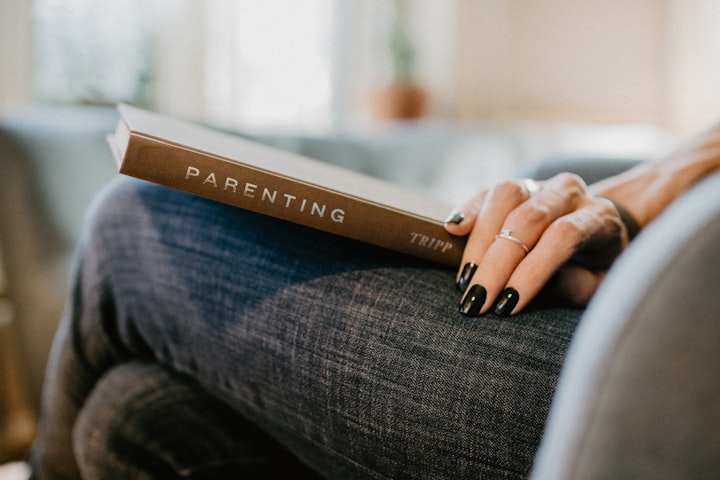Positive Parenting Techniques
ALL FOR LOVE AMD LOVE FOR ALL

How to Promote Positive Behavior and Healthy Emotional Development in Children
Parenting can be a challenging and rewarding experience, but it's not always easy to know how to help your child develop into a healthy, happy, and well-adjusted adult. Positive parenting techniques can be a useful tool for parents who want to promote positive behavior and healthy emotional development in their children.
What are Positive Parenting Techniques?
Positive parenting techniques are strategies that focus on promoting positive behavior and healthy emotional development in children. These techniques are based on the idea that children are more likely to learn and repeat positive behavior when they are praised and rewarded, rather than punished for negative behavior.
Positive parenting techniques involve a combination of different strategies, including:
Positive reinforcement: Praising and rewarding positive behavior to encourage its repetition.
Setting clear expectations: Establishing clear and consistent rules and expectations for behavior.
Active listening: Listening to a child's concerns and feelings without judgement or interruption.
Modeling positive behavior: Modeling positive behavior and attitudes for children to imitate.
Positive problem-solving: Working with children to find positive solutions to problems, rather than punishing them for mistakes or negative behavior.
Why Use Positive Parenting Techniques?
Positive parenting techniques have been shown to be effective in promoting positive behavior and healthy emotional development in children. Some of the benefits of positive parenting techniques include:
Improved self-esteem: Children who receive praise and positive reinforcement are more likely to have a positive self-image and high self-esteem.
Better behavior: Children who are praised and rewarded for positive behavior are more likely to repeat that behavior in the future.
Improved communication: Active listening can help children feel heard and understood, and can help them develop better communication skills.
Reduced stress: Positive parenting techniques can help reduce stress and conflict in the family, creating a more positive and supportive environment for children.
How to Use Positive Parenting Techniques?
Positive parenting techniques require patience, consistency, and empathy. Here are some tips for using positive parenting techniques with your child:
Be consistent: Establish clear and consistent rules and expectations for behavior, and enforce them consistently.
Be patient: Changing behavior takes time, so be patient and persistent in your efforts.
Be empathetic: Listen to your child's concerns and feelings without judgement or interruption, and work to understand their perspective.
Be specific with praise: When praising your child, be specific about what behavior you are praising and why it is important.
Be creative: Find new and creative ways to reward positive behavior, such as a special activity or treat.
Here are some small tips for positive parenting techniques:
Use positive language: Focus on using positive language when talking to your child, rather than negative language. For example, instead of saying "stop running," try saying "please walk."
Give choices: Children like to feel a sense of control, so giving them choices can be a useful strategy. For example, "Would you like to wear the blue shirt or the red shirt today?"
Show affection: Physical affection, such as hugs and kisses, can be a powerful tool for showing your child that you love and care for them.
Set realistic expectations: Setting realistic expectations for your child's behavior and abilities can help reduce frustration and promote positive behavior.
Practice active listening: Active listening involves listening to your child's concerns and feelings without interrupting or judging. This can help them feel heard and understood.
Praise effort, not just results: Praising your child's effort, rather than just the end result, can help promote a growth mindset and encourage them to keep trying.
Use positive reinforcement: Praise and reward positive behavior to encourage its repetition. This can include verbal praise, physical rewards, or special activities.
Avoid punishment: Rather than punishing your child for negative behavior, focus on finding positive solutions to problems and working together to find ways to improve behavior.
Remember, positive parenting techniques require patience, consistency, and empathy. By using small tips like these consistently, you can create a positive and supportive environment that promotes healthy emotional development and positive behavior in your child.
Conclusion
Positive parenting techniques can be a useful tool for parents who want to promote positive behavior and healthy emotional development in their children. By using a combination of strategies, including positive reinforcement, setting clear expectations, active listening, modeling positive behavior, and positive problem-solving, parents can help their children develop into healthy, happy, and well-adjusted adults. Remember, positive parenting techniques require patience, consistency, and empathy, so take the time to work with your child and create a positive and supportive environment that meets their unique needs.






Comments
There are no comments for this story
Be the first to respond and start the conversation.